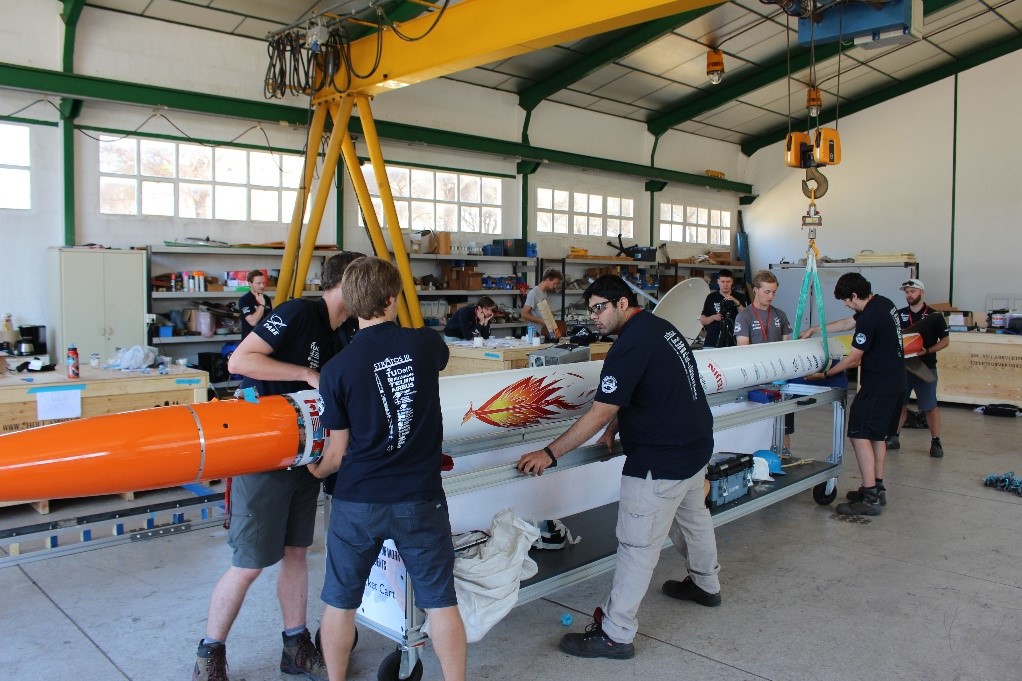
After yesterday’s dress rehearsal, today we measured the mass of the rocket and the location of its center of gravity. We need this information to determine the stability coefficient of the rocket to ensure the rocket is passively stable. In order to find the center of gravity, we assembled the whole rocket and hoisted it on the crane of the vehicle assembly building.
Passively stable means that the rocket tries to correct any angle it has with respect to airflow. When the rocket has an angle with respect to the airflow, the fins and rocket body get hit by the airflow. Then the aerodynamic forces produce a moment which means the rocket gets pushed back straight. There is a certain margin in which the center of gravity can be for the rocket to be stable enough to resist perturbations but not too stable as it will turn into the wind instead of straight up. So to reach as high as possible we need to get this right!
We measured the mass and the center of gravity mainly to confirm the data from the CATIA model of the rocket that we are using. By using special tools of the 3D Experience from Dassault Systemes we were able to estimate the position of the center of gravity to an accuracy of 5 mm on a 8.2 meter long rocket! In the end the rocket turned out to weigh 119 kg without fuel. Once it is filled with fuel and oxidiser before the launch it will weigh around 346 kg. With such a heavy rocket it was quite a challenge to measure the mass of the rocket, but with the devotion of many crew members here in Spain we were able to complete the task!
by Jeije van den Wijngaart

